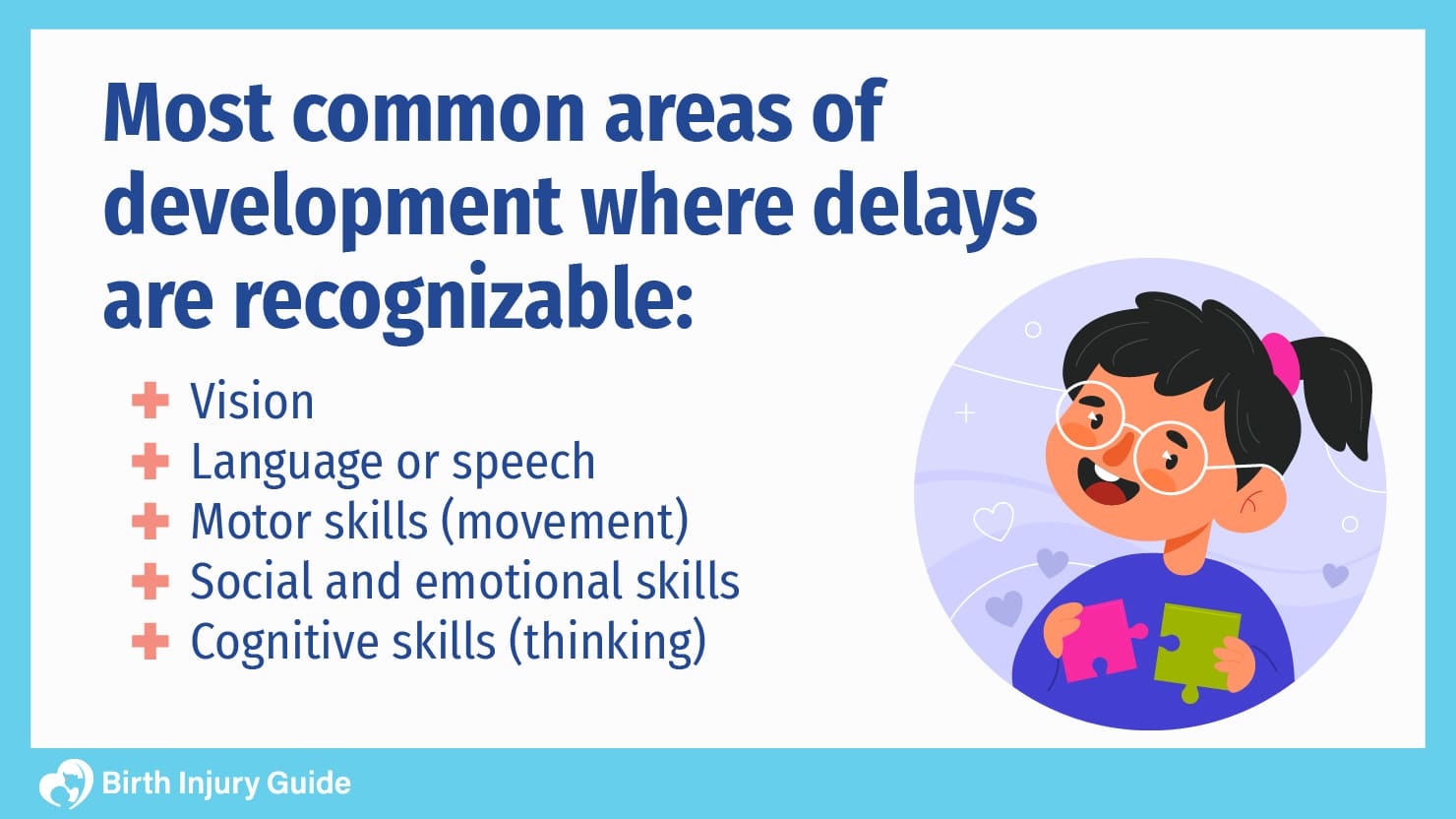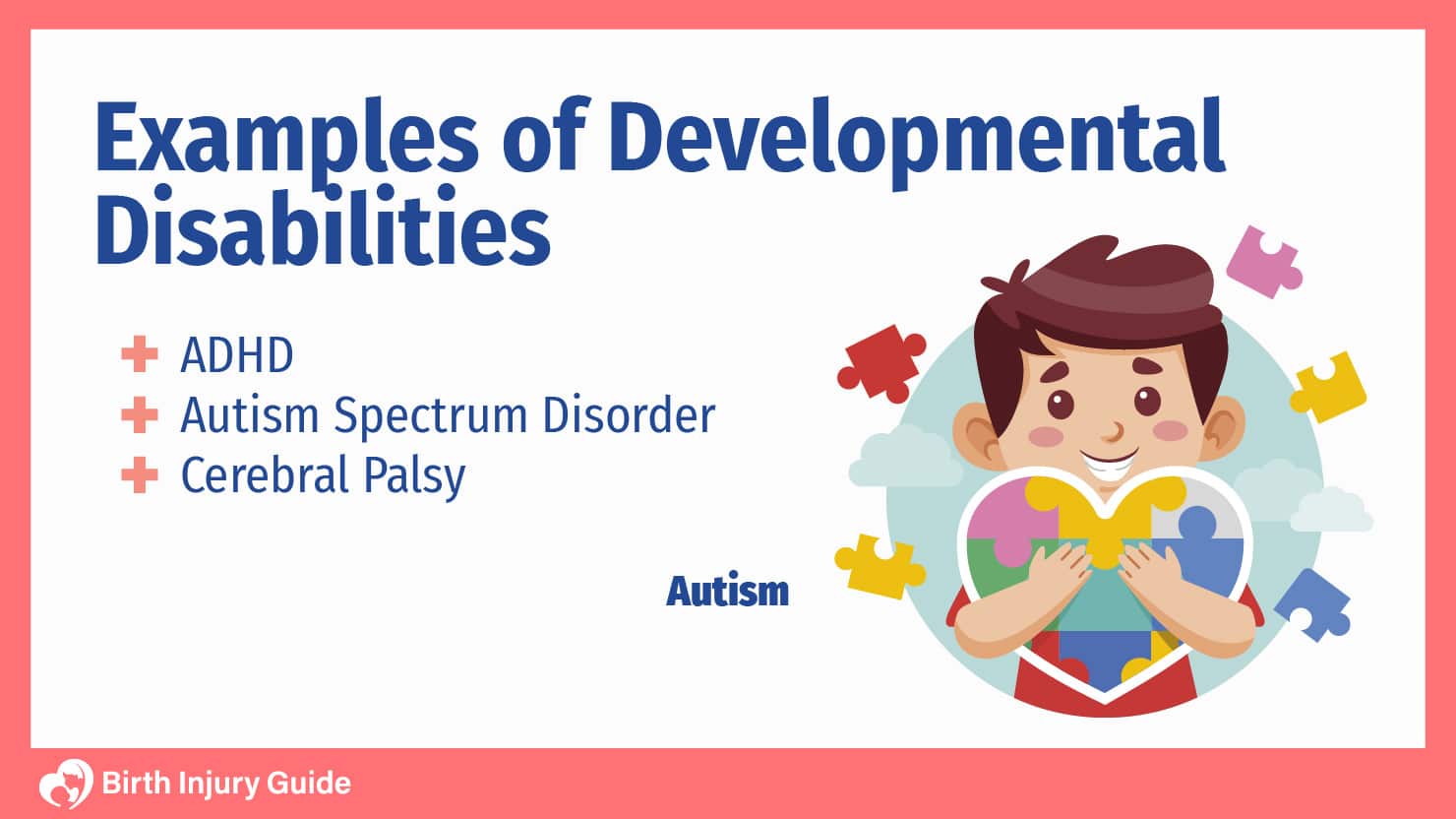
Study: Birth Injuries Cause Developmental Delays
According to in-depth research and ongoing studies by a series of medical researchers and doctors, birth injuries are the most common cause of developmental delays. Birth injuries can manifest in different ways, each causing different parts of the brain to not function properly.
Per Viola M. Frymann D.O., F.A.A.O., F.C.A., at least 80% of all children who live with attention deficit disorder (ADD), attention deficit-hyperactivity disorder (ADHD) or autism experienced some sort of birth injury. The most common injuries occurred during the labor and delivery period, a time in which the nervous system can be severely damaged. Injuries during this period often lead to cognitive and psychological problems.
During labor and delivery, the baby’s body – particularly the brain and spinal cord – are flexible enough to withstand the natural compression from uterine contractions. If too much force is applied, labor is prolonged or there are complications during this period, the baby can suffer injuries. These injuries can affect your child’s development in different ways.
What is a Developmental Delay?
A developmental delay can be most easily identified by your child missing milestones or falling behind their peers. This may be apparent in their physical, mental or emotional growth and development. Most often, a developmental delay is identified during the preschool period, or up to age five.

The most common areas of development where delays are recognizable are:
- Vision
- Language or speech
- Motor skills (movement)
- Social and emotional skills
- Cognitive skills (thinking)
A child can have delays in one or more of these areas. If there are significant delays in more than one area, it may be classified as a “global developmental delay”, meaning the delays are general and not limited to one area. Just because your child has a global developmental delay doesn’t mean you have reason to worry that they have a more serious problem. Children develop at different rates, and it is normal for some children to develop more quickly in certain areas, or more slowly in others.
Of course, it is understandable that you are concerned if your child seems to be falling behind other kids their age. The best thing you can do is address your concerns with your child’s pediatrician and continue to monitor their development. There are various reasons why your child may have a developmental delay. Sometimes it can be caused by something as seemingly simple as chronic ear infections, which are common in children. If your child cannot hear well, they may not develop adequate speech skills.
Examples of Developmental Delays
As you continue to monitor your child’s development, be mindful of the following five areas where developmental delays are most common:
Cognitive Skills
These are your child’s thinking skills. How they think, learn, and learn to solve problems. Every child is different in terms of their level of attention and awareness. However, by a certain age, your child should be capable of understanding their environment and objects in it. Talk to your child’s doctor if your child shows signs of a cognitive developmental delay. Some red flags are if your child does not use gestures, does not point to objects or pictures, does not know the function of everyday items, and does not follow instructions when given.
Social/Emotional Skills
These are skills that your child develops for socialization, getting along with others, and expressing needs. Social or emotional delays are usually apparent before your child reaches school age. Some of the red flags that may indicate a delay include not smiling, not responding with others, lack of facial expressions, lack of interest in games or play, lack of interest in engaging with others and difficulty being comforted.
Speech/Language Skills
Speech and language skills are your child’s ability to understand, learn and develop speech and language skills. Be on the lookout for signs of a possible speech delay, such as not responding to sounds, not babbling or imitating sounds, not using words like “mama”, or not progressively using more words together to form sentences. A speech delay isn’t always a sign of a more serious problem. It is, however, worth noting to your child’s doctor. With adequate therapy, a speech delay can be overcome.
Motor Skills
Fine motor skills and gross motor skills are what your child uses to coordinate and navigate daily activities. There are developmental milestones that you may see that dictate the approximate age at which your child should perform certain tasks. For a baby or toddler, be on the lookout for delays or missed milestones like not sitting up, rolling over or crawling; not grasping objects, not standing, and signs of poor muscle control.
Daily Living Activities
Your child’s development includes the ability to understand and manage everyday tasks. As your child grows and develops, there are some things that you expect to happen as part of developmental milestones – sleeping through the night, potty training, learning to brush their teeth, etc. If your child has a developmental delay, they may not have the cognitive and/or motor skills necessary to understand daily activities and how to perform them. Talk to your child’s doctor if you are having a particularly hard time potty training, or if it seems like your child is struggling to understand daily activities and why they are important.
Birth Injuries that Lead to Developmental Delays
There are numerous birth injuries that can lead to developmental delays. Most common are birth injuries involving asphyxia or lack of oxygen during birth. Other injuries and risk factors that can be a cause of developmental delays include:
- Forceps and vacuum extraction injuries
- Injuries due to improper epidural administration
- Uterine inertia
- Umbilical cord issues, such as a nuchal cord or cord prolapse
- Performing a C-section too late
- Medications used during labor
- Extremely long or extremely short labor
- Failure of physicians to monitor an infant who has a slow heart rate
- Neonatal anemia
- Meconium aspiration syndrome
- Maternal hemorrhaging
- Pulled too roughly out of the birth canal
- Abnormal fetal presentation
- Shoulder dystocia
Another study performed by the University of Miami’s Miller School of Medicine concluded that oxygen deprivation during and shortly after delivery may also be a cause of Autism.
“Reduced oxygen supply during labor, during delivery, during the prenatal period, during early infancy, could influence autism risk. We can’t say that definitely from our study, but that certainly is one possibility.”
Examples of Developmental Disabilities
You should know that a developmental delay is not the same thing as a developmental disability. A developmental delay is something that children can work through and grow out of. Developmental disabilities, however, are permanent disorders. A developmental disability is a diagnosable condition, such as ADHD, autism spectrum disorder (ASD) or cerebral palsy. A developmental screening can help you learn more. In either case, early intervention is important to give your child the best chances of success.

ADHD
One of the most common developmental and cognitive disorders that children suffer from is ADHD. Common signs of ADHD include:
- Easily and constantly distracted and/or bored
- Easily angered and frustrated
- Difficulties in staying on one task without losing interest or moving around
- Inappropriate running around or climbing, difficult to keep up with “always on the go”
- Easily losing or forgetting things, such as books and school supplies
- Interruption or intrusion of others
- High impulsivity
- Forgets to follow directions or forgets what the directions are
- Difficulty playing quietly, excessive talking
- Excessive fidgetiness, difficulty remaining seated
- Decreased body awareness
- Prone to accidents
- Sleep issues
Autism Spectrum Disorder
Autism spectrum disorder (ASD) is a wide-spectrum disorder, meaning it can be extremely mild, extremely severe or anywhere in between. No two children will have the same exact same presentation. A child with mild Autism may exhibit signs such as:
- Difficulty socializing with other children
- Avoiding eye contact
- Frequent behavioral/emotional outbursts
- Difficulty showing empathy towards others
- Flat innotations
- Hyperfocus on things of interest
- Repetitive behaviors
In more severe cases of Autism, children may exhibit symptoms and signs such as:
- Not talking at all or only babbling (past the age of three)
- Rocking back and forth
- Unable to engage in make-believe and pretend play by at least two years of age
- Repeating words or phrases over and over
- Difficulty pointing or using body language
- Difficulty being comforted when scared, sick, or distressed
- Unusual reactions to the way things sound, taste, smell, look or feel
- Delayed language development
- Repetitive behaviors
- Aggressive behavior
- Self injurious (self harm)
Keep in mind that the aforementioned signs and symptoms should never take the place of an official diagnosis. If you suspect your child may have developmental delays due to a birth injury, consult with your physician.
Cerebral Palsy
Cerebral palsy is the name of a group of disorders that cause problems with movement, posture and balance. Between 8,000 and 10,000 people are diagnosed with CP each year. It is one of the most common disorders affecting children. A child with cerebral palsy may exhibit developmental delays because they struggle with movement and motor skills. Parents may notice that they baby doesn’t support their head, crawl, walk, feed properly, or develop in areas of language and socialization.
Signs of Nervous System Damage
If the nervous system is damaged, infants typically exhibit common signs within 24-48 hours afterwards. Some of the common signs of an injury include:
- Feeding difficulties, such as spitting up or vomiting after being fed
- Excessive crying marked with the failure to console the baby
- Arched back marked when the infant is held on placed on his/her side
- Abnormal movements in the legs and/or arms
- Weak or absent cry
- Seizure activity
- Partial or complete paralysis
Physical developmental delays will occur when the child fails to meet milestones, including rolling, crawling, sitting up, pulling up and holding onto furniture, and walking. As the child enters school, parents may notice for the first time that behavioral and cognitive problems exist. Although, in some cases these problems may have been detected earlier.
Developmental Delays and Birth Injuries
If your child has significant developmental delays or developmental disabilities that are the result of a birth injury, you should take time to explore your legal rights. If your child’s injury was caused by medical negligence, then your family may qualify for compensation. At birth Injury Guide, we can help you thoroughly assess your child’s birth injuries and current condition, and help determine if you have a birth injury claim.
Start Your FREE Case Review Today
If you or your child is injured as a result of medical negligence, call us to learn more.



